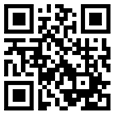0
新航道官方在线客服

阅读量:
The first clear evidence of a sense of magnetism in insects
《昆虫能感知磁力的个确凿证据》 摘自The Economist June 23rd 2018
Bogong moths are not as glamorous as monarch butterflies. Their name means “brown” in Dhudhuroa, a now-extinct language once spoken in eastern Australia, where they live. And that is what they are—in contradistinction to a monarch’s glorious orange and black. But drab though they may be, bogongs surely match monarchs in migratory tenacity.
布冈夜蛾 (澳大利亚的一种夜蛾)不如帝王蝴蝶那么魅力四射。它们的名字在Dhudhuroa语言中是棕色的意思—Dhudhuroa语曾在澳大利亚东部使用的一种语言,现已消亡,Bogone飞蛾也在那里生活。就是这种褐色的飞蛾,与帝王蝶鲜艳的橙黑相间的颜色显著不同。不过尽管它们看起来单调乏味,这些飞蛾在迁徙当中表现出来的坚韧却可以与帝王蝴蝶相媲美。

Monarchs, famously, fly across much of North America, starting or ending their journeys in one of a few groves of trees in central Mexico. An adult monarch, though, migrates only once. During their lifetimes, Bogong moths that survive to do so will make a pair of 1,000km journeys. One is from their winter birthing grounds in sun-scorched Queensland and New South Wales to a small number of cool caves in the mountains of Victoria where they will spend the summer months resting. The other is back again.
帝王蝶是出了名地飞跃大部分北美地区,旅途始于或终于墨西哥中部的某个小树丛中。但是一只成年帝王蝶一生仅迁徙一次。而在布冈夜蛾的一生当中,活下来的成年飞蛾会有两次距离1000km的旅途。其中一次旅途是从它们在冬天的阳光充足的昆士兰地区以及新南威尔士出生地飞到维多利亚州山脉中的几个寒冷的洞穴中,它们将在那里度过夏天。另外一次旅途是飞回来。

How they find their way to and from these caves is a mystery. But it is less mysterious in light of work by David Dreyer and Eric Warrant at the University of Lund, in Sweden, published this week in Current Biology. Dr. Dreyer and Dr. Warrant suggest that bogongs use a combination of magnetic compasses and topography.
关于它们是如何找到飞往这些洞穴的仍然是个谜。但是从瑞典隆德大学David Dreyer和Eric Warrant发表在本周《当代生物学》期刊上的文章来看,就不那么神秘了。Dreyer和Warrant博士认为布冈夜蛾是结合使用了磁针罗盘以及地形两个方法。

Several types of animals, including birds, turtles and fish, are known to sense and navigate by Earth’s magnetic field, but evidence for such powers in migratory insects has been tenuous. A lone experiment has suggested monarchs may be able to detect magnetism—but, if so, that is probably just a back-up mechanism. Abundant other evidence suggests monarchs navigate mainly by the sun. For a night-flying moth, though, that is not an option.
很多种类的动物,包括鸟类,乌龟以及鱼类,都是通过地球磁场来导航,但是关于迁徙昆虫这方面能力的证据一直很缺乏。的实验证明帝王蝶也许能够利用磁场(导航),但是如果真是这样,那也很可能只是备用方案。其他海量证据表明帝王蝶主要靠太阳导航。但是对于夜间飞行的蛾子来说,依赖太阳导航是不行的。

To explore any magnetic sense bogongs might possess Dr. Dreyer and Dr. Warrant used light traps to capture hundreds of the moths during their migrations over the course of two seasons. They and their colleagues then glued stalks to the moths’ backs and, using those stalks, tethered the insects inside a flight simulator in which they were free to “fly” in any direction they wished—though, of course, they could not actually move. The simulator was surrounded by a pair of magnetic coils that cancelled out Earth’s field and replaced it with one of similar strength that could be turned through 120°. Because experiments like these, conducted on birds such as pigeons, have revealed that those animals do use Earth’s magnetic field for navigation, the researchers hoped their set up would to do the same with the moths.
为了探究布冈夜蛾可能拥有的磁感应,Dreyer和Warrant博士在两个季节迁徙时利用光捕捉器抓捕了数百只飞蛾。然后他们及其同事们将追踪装置用胶水粘到飞蛾的后背上,同时利用这些追踪器把这些昆虫拴到一个模拟飞行器中,在那里面它们可以自由地朝任何方向飞--- 当然它们实际上无法移动。这个模拟器周围有一对电磁线圈可以抵消地球磁力并用类似强度但可以120度转向的磁力取代。因为类似这样的实验曾在鸽子这样的鸟类身上做过,表明了这些动物确实使用地球磁场导航,研究人员希望他们的设置能够在飞蛾方面的出同样的结果。

It did not. Unlike birds, the moths either failed to react to the movement of the field or reacted in an unpredictable manner. Unwilling to give up their hypothesis, though, Dr. Dreyer and Dr. Warrant wondered if they had simplified their apparatus too much. Many nocturnal insects have exquisite night vision, so the two researchers thought that perhaps the absence of visual cues within their flight simulator, which had been intentional, might actually have confounded their experiment.
但是并没有。跟鸟类不同,飞蛾要么无法对磁场运动作出反应,要么反应的方式没法预测。不过,Dreyer和Warrant博士并不想放弃他们的假设,他们相要知道是否是设备太过简化的原因。很多夜间活跃的昆虫都有极其敏锐的夜视能力,因此这两位研究人员认为也许是飞行模拟器当中缺少了视觉信号--- 是刻意为之的–可能是实验失败的原因。

To test this, they lined the simulator’s interior with white felt and introduced a triangular black “mountain” above a black horizon as a landmark. During the experiment they started by keeping their magnetic field in alignment with Earth’s and then, after five minutes, began moving it. The moths continued to travel in the same direction with respect to the field for about three minutes after the field began moving but then, presumably as they realised that their visual cue and their magnetic cue were now in conflict with one another, they became disoriented.
为了验证这个想法,他们用白色毛毡在模拟器内部布置了一条线,并用一个三角形黑色’山形’图案放到黑色水平线上方作为标记。在实验当中,他们开始将(模拟器的)磁场与地球的的地磁场保持一致,然后五分钟之后开始移动这个磁场。飞蛾在磁场开始移动后三分钟持续面向磁场同一方向飞行,之后,也许是他们意识到视觉信号和磁场信号不一致,所以它们迷失方向了。

This finding suggests that the moths do indeed depend on a magnetic sense to navigate during their long journey, but that they cannot, as it were, fly on instruments alone. They have rather to have sight of visual markers as well. The test of this will be in the next series of experiments Dr. Dreyer and Dr. Warrant are planning, which will move the “mountain” and the magnetic field simultaneously. That, they hope will fool the insects into thinking they are flying home.
这一发现表明飞蛾确实会依靠磁感应在它们的长途旅行中导航,但是好像它们无法仅靠一种方式导航。它们也要看到视觉标记才可以。关于这个的测试将在Dreyer和Warrant博士正在计划中的下一系列实验中,而下面的实验将会同时移动‘山形’标记以及磁场。那样做希望可以让昆虫误以为它们正在飞回家。
关注新航道官网,英语轻松学!
